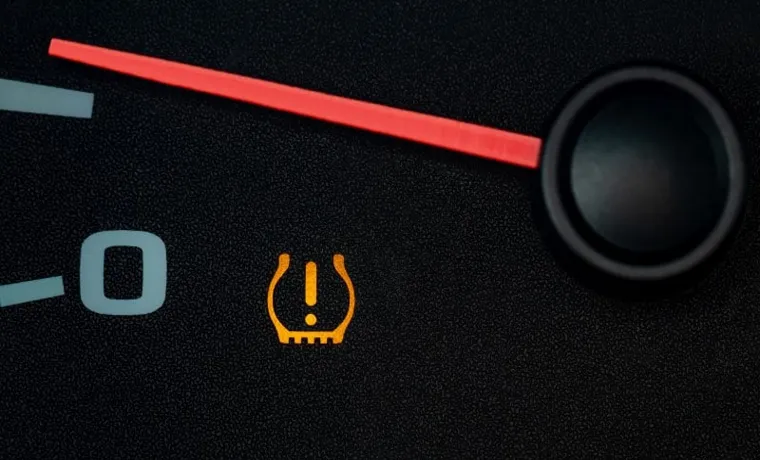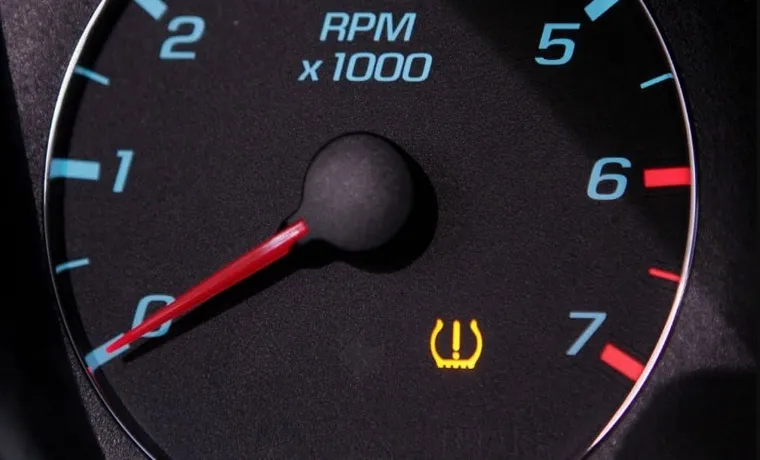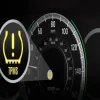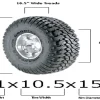Do you feel like you’re constantly battling with a stubborn tire pressure light that just won’t go away? You’re not alone! Many drivers struggle with this same frustrating problem. So, why does your tire pressure light keep blinking, even after you’ve added air to your tires? Think of it like a stubborn cold that just won’t go away – there could be multiple reasons for the persistent issue. In this blog post, we’ll discuss the common causes of a blinking tire pressure light and what you can do to fix it.
Don’t let a pesky light ruin your driving experience – let’s dive in and solve the mystery!
Table of Contents
Understanding Your Tire Pressure Light
Do you find yourself wondering why your tire pressure light keeps blinking? This is a common issue faced by many drivers and can indicate a variety of problems with your vehicle’s tires. Most commonly, it means that your tire pressure is low and needs to be filled. However, it could also indicate a puncture or leak in the tire, a faulty tire pressure sensor, or even a fault in the car’s electrical system.
It’s important to address this issue immediately as driving on low tire pressure can lead to reduced handling and fuel efficiency, and even increase the risk of a blowout. Make sure to check your vehicle’s owner manual to see the recommended tire pressure levels and visit a qualified mechanic to have the issue properly diagnosed and resolved.
What Does the Blinking Light Mean?
If you’ve ever had your tire pressure light come on while driving, you know how nerve-wracking it can be. But don’t panic! The blinking light simply means that the tire pressure in one or more of your tires is too low and needs to be checked. It could be caused by something as simple as a change in temperature or a slow leak.
It’s crucial to get your tire pressure checked as soon as possible, as driving on underinflated tires can be incredibly dangerous and can lead to tire failure or blowouts. Make sure to check your owner’s manual for the recommended tire pressure for your vehicle and adjust accordingly. If the light continues to stay on after filling your tires to the recommended pressure, it could be a more serious issue that requires a trip to the mechanic.
Remember, keeping your tire pressure at the correct level not only helps with safety but also improves fuel efficiency and tire lifespan.

Reasons Why Your Tire Pressure Light May Be Blinking
As a vehicle owner or driver, it is essential to be familiar with the warning lights on your car dashboard, particularly the tire pressure light. The tire pressure light usually appears as a yellow exclamation mark inside a horseshoe symbol and it indicates that one or more of your car tires may have low air pressure. However, the light may also blink repeatedly, and this can indicate different things.
One possible cause of the blinking tire pressure light is a malfunctioning sensor. If the sensor is not working correctly, it may incorrectly signal low tire pressure or other issues. Another cause may be a weak or worn-out battery.
If the battery power is too low, the tire sensor may not function correctly and cause the light to blink. Sometimes, a significant drop in temperature may also cause tire pressure to drop, causing the light to blink. If you are not sure of the cause, it is essential to consult a reliable mechanic or tire professional as soon as possible to address the issue and avoid potential problems.
How to Solve the Issue
If you’re wondering why your tire pressure light keeps blinking, there are certain things you can do to solve the issue. The first thing to check is your tire pressure. If it’s low, fill it up to the recommended pressure level.
If the light still keeps blinking, you should check for any punctures or leaks in your tires using a tire pressure gauge. Make sure to also check the tire valve stems for any damage or debris that could be causing the issue. Sometimes, simply driving your car for a few miles can reset the sensor, but if the light continues to blink, it may be time to bring your car to a mechanic for further inspection.
Remember, if you ignore the blinking light, it could lead to a dangerous situation on the road. So, always ensure your tires are in good condition before driving your car.
Check Your Tire Pressure
One of the most overlooked aspects of car maintenance is checking tire pressure regularly. Overinflated or underinflated tires can cause a variety of issues, from decreased fuel efficiency to increased risk of accidents. But don’t worry, the solution to this problem is simple and can be done in a matter of minutes.
Start by finding the recommended tire pressure for your car, which is usually listed in the owner’s manual or on the inside of the driver’s side door. Then, use a tire pressure gauge to test the pressure of each tire and adjust it accordingly. It’s important to keep in mind that tire pressure can change with temperature and driving conditions, so it’s a good idea to check it at least once a month.
By taking the time to check your tire pressure regularly, you can ensure a smoother and safer ride while also saving money on fuel in the long run. So, next time you fill up at the gas station, take a few extra minutes to check your tire pressure and enjoy a worry-free drive.
Look for Damaged Tires
When it comes to tire maintenance, checking for damages should always be at the top of your list. Whether it’s a punctured tire or worn-out treads, any type of damage can put you at risk on the road. But how can you solve this issue? The first step is to visually inspect each tire, checking for any tears, cracks or bulges on the sidewalls.
Then, verify the tread depth using a properly calibrated gauge. If you find any damages, it’s best to replace the tire as soon as possible to ensure your safety. Remember, your tires play a critical role in keeping you and your passengers safe during your rides.
Don’t hesitate to seek professional help if you’re unsure about the condition of your tires. By keeping a close eye on tire damages, you can avoid unnecessary accidents and ensure your vehicle stays in top-performing shape.
Check Your Valve Stem
As an essential component of your tire, the valve stem plays an important role in maintaining proper tire pressure. Over time, valve stems can become worn or damaged, leading to leaks and decreased performance. Luckily, solving this issue is a quick and straightforward process.
Start by visually inspecting your valve stem for any signs of damage or wear. If you notice any cracks or deformities, it’s time for a replacement. If the valve stem looks to be in good shape, use a tire pressure gauge to check the pressure.
If the pressure is low, fill it up to the recommended levels. Ensuring your valve stems are in good condition is a crucial step in maintaining the safety and performance of your vehicle.
Preventing the Tire Pressure Light from Blinking
Have you ever wondered why your tire pressure light keeps blinking, even after you fill up your tires to the recommended pressure level? The most common reason for this issue is a faulty tire pressure sensor. When one or more sensors are not working correctly, the monitoring system cannot accurately determine the tire pressure and will continuously flash the warning light. Another reason could be changes in temperature, as tires tend to lose pressure in colder weather.
To avoid this, it’s important to regularly check your tire pressure, especially during the winter months. Additionally, if you have replaced a tire or recently rotated them, it’s crucial to reset the monitoring system to recognize the new tire locations. By taking proper care of your tires and ensuring the tire pressure sensors are functioning correctly, you can prevent the annoying and potentially dangerous blinking tire pressure light.
Maintain Correct Tire Pressure
Maintaining the correct tire pressure is crucial to prevent the tire pressure light from blinking and ensure a safe driving experience. Low tire pressure can cause your vehicle to consume more fuel, increase tire wear and tear, and decrease your car’s stability on the road. On the other hand, overinflated tires are prone to bursting, leading to a dangerous situation.
Therefore, it is essential to check the tire pressure regularly and keep it at the recommended level. You can find the correct tire pressure in the vehicle owner’s manual or on the driver side door jamb. Use a digital tire pressure gauge to measure the tire pressure accurately.
If the tire pressure is too low, fill it with air using a reliable air compressor. Conversely, if the tire pressure is too high, release some air, not to exceed the recommended limit. By maintaining the correct tire pressure, you can avoid the inconvenience and hazards that arise from a blinking tire pressure light.
Avoid Rough Roads
One of the most common warnings on our car’s dashboard is the tire pressure light. It often blinks to remind us that something is off with our tires, and we need to fix it as soon as possible. Here is one thing you can do to prevent this light from blinking: avoid rough roads.
When we traverse bumpy and uneven roads, it can affect our tire pressure, leading to unexpected drops or rises in pressure, which may cause the warning light to turn on. So, as much as possible, take the smoother route, especially if you know your tires are already struggling with low pressure. This simple step can help you avoid unnecessary trips to the tire shop and ensure your safety on the road.
Regular Maintenance of Your Tires
Regular maintenance of your tires is essential to prevent the tire pressure light from blinking. One of the significant causes of the tire pressure light coming on is incorrect tire pressure in your car’s tires. Over time, your vehicle’s tires can lose tire pressure, and it is crucial to check and adjust the pressure regularly.
You can do this by investing in a tire pressure gauge and regularly checking the pressure once every month or so. Maintaining the correct tire pressure not only prevents the tire pressure light from appearing but can also help you save on fuel costs and extend your tires’ lifespan. Checking your tires’ tread depth is also essential to ensure your tires are not worn down and provide optimal traction while driving.
Regular maintenance helps minimize the risk of any tire-related problems while you are on the road. By keeping your tires properly inflated, you can avoid unexpected tire blowouts or flats and stay safe on the road. So, don’t put off regular tire maintenance and ensure that your vehicle is always equipped with the best set of tires that will keep you and your passengers safe on the road!
Conclusion
In the end, the reason why your tire pressure light keeps blinking may be as simple as the fact that your tires simply need some air. Or perhaps it’s trying to remind you that proper tire maintenance is crucial for both your car’s performance and your safety on the road. Either way, don’t wait too long to address the issue, or you might find yourself stuck on the side of the road with a flat tire and a lot of regret.
“
FAQs
What are the common reasons for the tire pressure light to blink?
Some possible reasons for continuous blinking of tire pressure light could be low pressure, faulty sensors, leaky valve stems, bad receiver, or electrical malfunctioning.
Can I drive my car if the tire pressure light keeps blinking?
If the tire pressure light is continuously blinking, it indicates a malfunction in the vehicle’s tire pressure monitoring system. It is not recommended to drive under such circumstances as it can result in safety hazards or tire damage.
How can I reset the tire pressure light if it continues to blink after filling air?
After adding air to your tires, you can reset the tire pressure light by following the instructions provided in your car’s owner’s manual or contacting a professional mechanic.
What should I do if the tire pressure light keeps blinking even after adding air?
If the tire pressure warning light continues to blink after you have monitored the air pressure and filled in the right amount required, it could be a sign of a more extensive issue, such as a faulty sensor or wiring. It is advised to seek professional assistance immediately.
How often should I monitor my car’s tire pressure, and does it help prevent the blinking of the tire pressure light?
It is recommended to check your tire pressure at least once a month or before a long journey. Maintaining adequate air pressure in tires can help avoid issues with the tire pressure warning light and ensure a safe and fuel-efficient drive.
Is it possible for the tire pressure light to blink due to faulty tire condition?
The continuous blinking of the tire pressure warning light could be due to tire damage or puncture. It is essential to check the tire condition and repair or replace the damaged tire before driving.
What is the typical cost for repairing a faulty tire pressure monitoring system?
The cost of repairing a faulty tire pressure monitoring system can vary depending on the severity of the issue. It is recommended to consult a professional mechanic for an accurate estimate.



